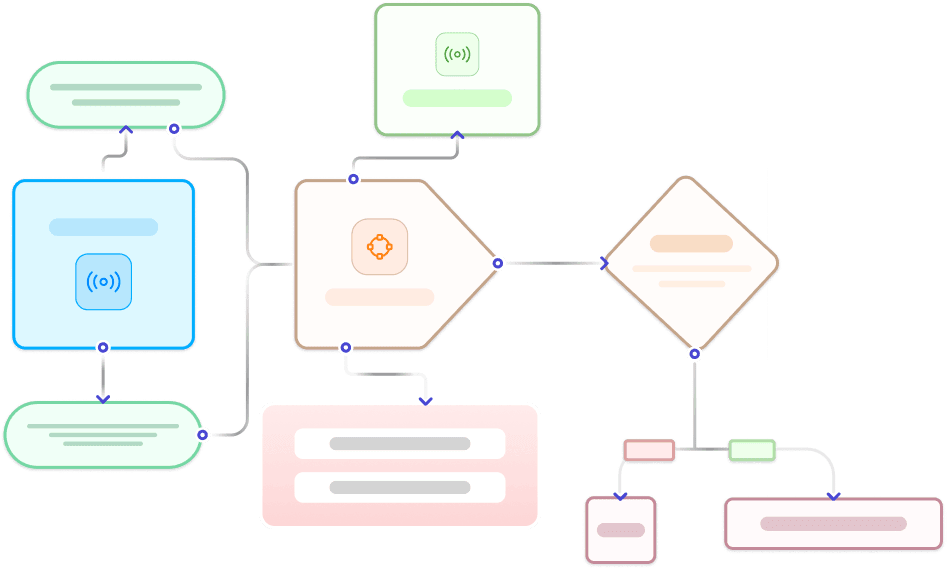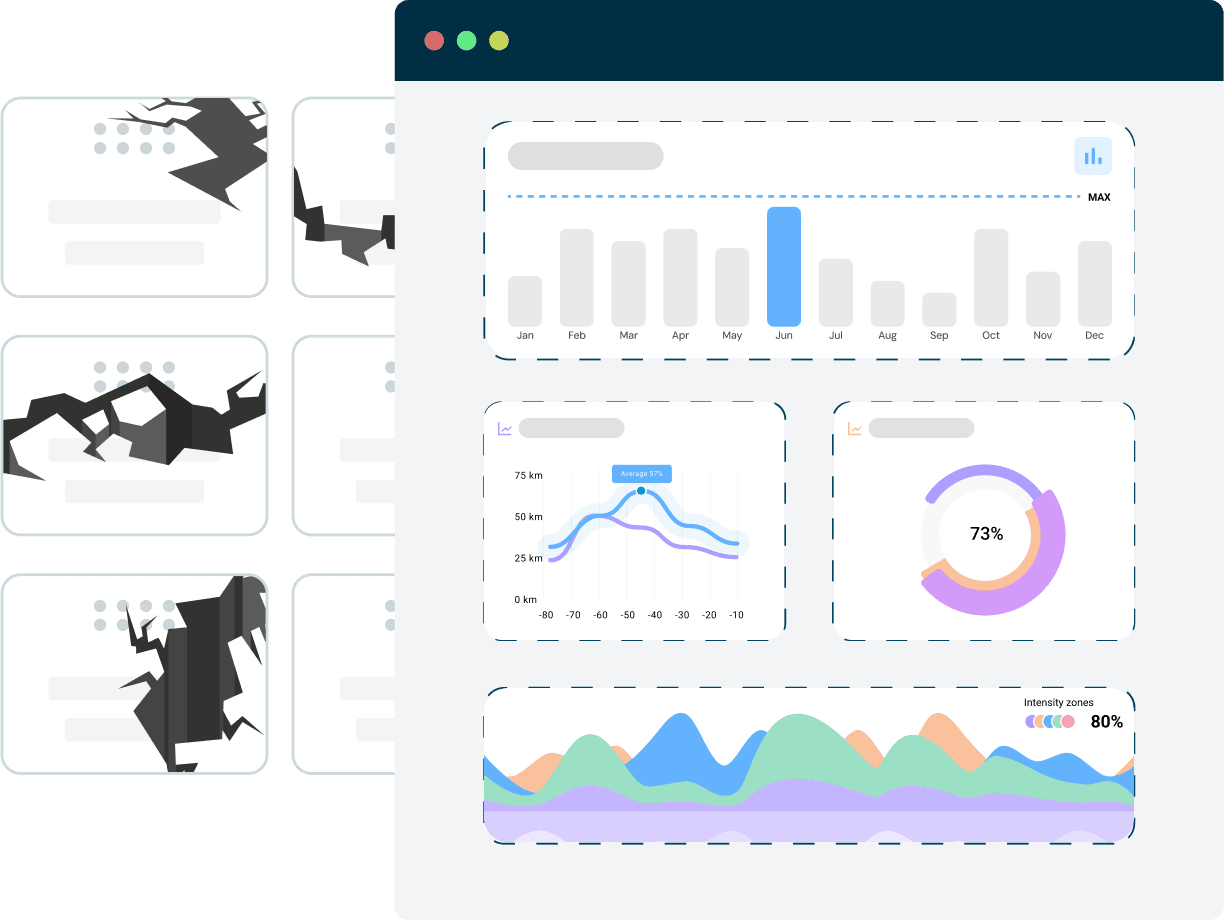Integrating Salesforce with HubSpot
We bring Salesforce and HubSpot together so everything just works. Your data, messages, and workflows stay in sync. And you get clarity and consistency without complexity.

.png)
A Structured Approach to Your salesforce and HubSpot Integration
This isn’t a plug-and-play connector. We break the integration into clear phases. No assumptions, no shortcuts, and no hidden gaps.
Understand business goals, system dependencies, and what success looks like.
- Stakeholder interviews across Sales, Marketing, Service, Ops, IT
- Audit [Your Platform] and HubSpot configurations, API availability, scopes, and event models
- Identify use cases: sync, trigger, enrich, embed (examples: Gmail to HubSpot logging, ChatGPT actions, order updates, ticket routing)
- Define system of record per entity and field (HubSpot vs [Your Platform])
- Capture compliance and security needs: PII handling, data residency, access control
- Prioritize “must integrate” vs “optional” flows
- Finalize scope, constraints, and success criteria

Blueprint how data and workflows move across tools.
- Map entities and properties: contacts, users, messages, tickets, orders, products, events
- One-way vs bi-directional rules, update precedence, and conflict handling
- Lifecycle and status mapping: lead and deal stages, ticket states, subscription states, order states
- Workflow alignment: assignment, SLAs, notifications, approvals, AI prompts and actions
- Activity design: what gets written to the HubSpot timeline (emails, chats, calls, notes, events)
- Validation rules and data quality guardrails
.webp?width=327&height=250&name=Solving%20Data%20intake%20(from%20all%20demand%20sources).webp)
Create a reliable, scalable integration foundation.
- Choose approach: native app, marketplace connector, iPaaS, or custom API
- Authentication and permissions: OAuth scopes, key management, least privilege
- Real-time vs batch sync: webhooks, polling schedules, throughput planning
- Reliability: idempotency, retries, exponential backoff, dead-letter queues
- Observability: logs, metrics, alerting, runbooks, error triage
- Rate-limit strategy and pagination
- Solution diagrams and sequence maps reviewed with stakeholders

Prove the integration safely before scale.
- Configure sandbox or test tenants in Your Platform and HubSpot
- Connect middleware or custom services with sample secrets and scopes
- Pilot a golden dataset and key flows:
- Example: Gmail email → HubSpot contact timeline, ticket creation, AI draft response in ChatGPT
- Example: Shopify order → HubSpot deal update and customer lifecycle change
- Validate mappings, timelines, and automations
- Run failure scenarios and recovery tests
- Capture pilot feedback and finalize go-live checklist

Launch with confidence and minimal disruption.
- Stage rollout by object, team, or region
- Activate sync for priority entities and events
- Validate counts, values, and associations against acceptance criteria
- UAT with business owners; confirm reporting and attribution
- Monitor health dashboards, error queues, and latency
- Document rollback and hotfix procedures

Drive adoption and keep the integration healthy.
- Role-based training and quickstart guides for admins and end users
- Playbooks for common tasks and troubleshooting
- Monitoring dashboards for sync health and data quality
- Governance for changes: new fields, new apps, new prompts
- Quarterly optimization to expand use cases and reduce manual work

What Does Integration Deliver?
Integration is about unifying, not just connecting APIs. When salesforce and HubSpot talk to each other, silos disappear. Integration with HubSpot brings all your customer activity, automation, data, reporting, and workflows into HubSpot, giving you one timeline, trusted insights, and scalable growth without the chaos.
Complete CRM Integration: Salesforce ↔ HubSpot


Looking to integrate AI into your HubSpot?
Our Frequently Asked Questions
The integration uses secure, direct API connections between Salesforce and HubSpot. Data moves in real time through encrypted channels and is never stored on third-party servers. Only schema and metadata are read temporarily for mapping and field alignment.
Most setups take 1–3 hours. More complex environments with custom objects, validation rules, and large data volumes may require 4–6 hours. Syncing can run in the background so teams can continue working during setup.
Yes. You can sync all records or filter by owner, lifecycle stage, custom fields, record type, or date ranges. This helps keep both systems clean and prevents unnecessary data movement.
Yes. You can enable one-way or two-way syncing for leads, contacts, accounts, deals, activities, and custom fields. Each object can have its own sync logic depending on which system you want as the source of truth.
Yes. The integration maintains account-to-contact links, deal associations, owners, tasks, notes, and activity relationships. Connected records remain properly linked so workflows and dashboards continue functioning.
Yes. The integration can automatically create matching fields in either CRM when needed. This ensures mapping accuracy and prevents sync errors caused by missing fields.
No. Workflows do not sync between platforms. However, all required data for those workflows can be synced so you can rebuild or redesign automations inside each CRM without gaps.
Pricing usually depends on record volume, number of synced objects, sync frequency, and whether custom objects or advanced field mappings are required. You only pay for the components you choose to enable.
Yes. Attachments, logged emails, calls, meetings, notes, and tasks can be synced. You can choose which activity types to include to keep both CRMs clean and efficient.
Yes. Support is available for monitoring sync health, updating mappings, troubleshooting API issues, and helping teams adopt the integrated workflows across both CRMs.
Here's a quick case study :)

As a solo marketer, I needed a team that could not only set up the technical side of things but also help me think strategically—OneMetric delivered on all fronts. They completely revamped our HubSpot CRM and marketing automation, making it possible for me to work more efficiently and focus on the bigger picture. Their guidance in shifting towards an ABM strategy has been invaluable, allowing us to tailor our marketing more effectively. From creating a sleek newsletter design to building out insightful reporting, they’re always thinking ahead. If you’re looking for a dedicated, hardworking team to level up your marketing efforts, OneMetric is your go-to!
Julie Taylor
Head of Marketing

Relatable? We should definitely talk.
All that we’ll cover when we speak:
- Opportunities to increase the ROI of your HubSpot investment
- Your current GTM motions and future roadmap
- Challenges that you face with your overall revenue stack
- Missed revenue opportunities due to gaps in your funnel
- What would "wins" look like for you?

Check out Case Studies, Playbooks & more!
Explore how OneMetric is helping GTM teams globally optimize their RevOps ecosystem and scale their sales & marketing efforts.
-
 One metricHubspotHow we enhanced sales processes through technology and strategy, yielding significant improvements in efficiency and outcomes
One metricHubspotHow we enhanced sales processes through technology and strategy, yielding significant improvements in efficiency and outcomes -
 Salesforce pardotHubspotHow we enhanced sales processes through technology and strategy
Salesforce pardotHubspotHow we enhanced sales processes through technology and strategy -
 Google adsHow we helped a furniture rental company decrease their CAC by 67% and increase contribution of Google Ads to revenue by 6X
Google adsHow we helped a furniture rental company decrease their CAC by 67% and increase contribution of Google Ads to revenue by 6X -
 WoocommerceKlaviyoHow we helped one of the largest D2C lifestyle brands in the US generate 66% of their entire year’s email campaign revenue in just one quarter.
WoocommerceKlaviyoHow we helped one of the largest D2C lifestyle brands in the US generate 66% of their entire year’s email campaign revenue in just one quarter. -
 Google adsSeoSemrushHubspotHow we helped a Digital Marketing firm drive a 71% increase in monthly website sessions by migrating to HubSpot
Google adsSeoSemrushHubspotHow we helped a Digital Marketing firm drive a 71% increase in monthly website sessions by migrating to HubSpot -
 HubspotHow our Marketing Automation efforts for a Global Market Intelligence company led to a 28% increase in Meetings Booked
HubspotHow our Marketing Automation efforts for a Global Market Intelligence company led to a 28% increase in Meetings Booked -
 HubspotHow CRM Integration increased conversions by 19.5% for this Office Space Rentals Company
HubspotHow CRM Integration increased conversions by 19.5% for this Office Space Rentals Company -
 Chillie piperHubspotHow strategic lead management boosted Monthly Pipeline by 83% and achieved a 62% Lead-to-Deal Conversion
Chillie piperHubspotHow strategic lead management boosted Monthly Pipeline by 83% and achieved a 62% Lead-to-Deal Conversion -
 KlaviyoHow we helped a jewelry brand drive over $13,000 in sales in a month with Klaviyo
KlaviyoHow we helped a jewelry brand drive over $13,000 in sales in a month with Klaviyo -
 FacebookWhatsappOrganic social mediaHow we leveraged strategic demand generation channels to deliver 22% compounded monthly growth in qualified leads for an investment fund
FacebookWhatsappOrganic social mediaHow we leveraged strategic demand generation channels to deliver 22% compounded monthly growth in qualified leads for an investment fund -
 Hubspot service hubInsure-techHow we helped a leading insure-tech company reduce time to first response for support tickets by 39%
Hubspot service hubInsure-techHow we helped a leading insure-tech company reduce time to first response for support tickets by 39% -
 HubspotApi integrationFintechHow we helped a leading FinTech company increase SMS response rate by 72% by streamlining messaging within HubSpot
HubspotApi integrationFintechHow we helped a leading FinTech company increase SMS response rate by 72% by streamlining messaging within HubSpot -
 SalesforceHow we enabled streamlined partner onboarding and collaboration to drive 28%+ sales growth for our client.
SalesforceHow we enabled streamlined partner onboarding and collaboration to drive 28%+ sales growth for our client. -
 MigrationHubspotMarketing hubSales hubService hubHow an AI platform achieved unified sales, marketing, and customer onboarding operations by migrating to an integrated HubSpot ecosystem
MigrationHubspotMarketing hubSales hubService hubHow an AI platform achieved unified sales, marketing, and customer onboarding operations by migrating to an integrated HubSpot ecosystem -
 Hubspot marketing hubSalesforce integrationA strategic integration of HubSpot and Salesforce to streamline operations, enhance lead nurturing, and boost sales productivity
Hubspot marketing hubSalesforce integrationA strategic integration of HubSpot and Salesforce to streamline operations, enhance lead nurturing, and boost sales productivity -
 KlaviyoHow we helped a leading D2C home furniture brand generate almost $150,000 in sales in under 10 weeks
KlaviyoHow we helped a leading D2C home furniture brand generate almost $150,000 in sales in under 10 weeks
.png?width=5528&height=1940&name=OneMetric%20(3).png)


